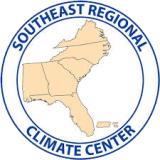Southeast Climate Monthly Webinar: June 27, 2023
For the second straight month, temperatures were below average across much of the Southeast, particularly across parts of Virginia and the Carolinas. On the other hand, temperatures were quite warm across the southern tip of Florida, Puerto Rico, and the U.S. Virgin Islands, where excessive heat warnings were issued on several days. Precipitation was above average across much of the Southeast, owing to the passage of multiple frontal boundaries and low-pressure systems. However, the Caribbean region remains dry, with significant rainfall and moisture deficits building over the past several months. Drought expanded across the interior of the Southeast, while major improvements were noted across the Florida Peninsula. Exceptional (D4) drought emerged on Saint Croix. The number of severe weather reports through the first three weeks of June was more than double the monthly average. El Niño conditions have developed and are expected to persist through the winter. River streamflows remain mostly in the normal range across the region, with some areas seeing above-normal flows.
Looking Ahead: Generally warm and wet weather is expected across much of the Southeast over the next week. Cooler conditions are expected across the northern half of the region during week 2 with precipitation remaining above average. Average rainy season precipitation is expected across Florida. Weeks 3 and 4 look to be more variable in terms of temperature, while precipitation remains mostly above average. The summer outlook continues to advertise above-average temperatures, though there is less confidence in the precipitation forecast. Drought is expected to persist across Virginia, while removal is likely across Puerto Rico and Florida. The flood outlook through September is for near-normal conditions for most Southeast river systems. However, we need to watch for flooding across Florida as the wet season progresses and across the entire region as tropical activity increases.
Check out this month’s special presentation, “2023 Atlantic Hurricane Outlook” from Matthew Rosencrans at the NOAA/NWS Climate Prediction Center.
About This Webinar
The Southeast Climate monthly webinar series is hosted by the Southeast Regional Climate Center, the National Integrated Drought Information System (NIDIS), and the NOAA National Weather Service. These webinars provide the region with timely information on current and developing climate conditions such as drought, floods, and tropical storms, as well as climatic events like El Niño and La Niña. Speakers may also discuss the impacts of these conditions on topics such as agriculture production, water resources, wildfires, and ecosystems






